Finding fire wood during the winter and some basic wood lot managment we utilize
We have been living off grid for over ten years and we have yet to get ahead on our fire wood for the winter. Some people have two years stored up, but for us, we find that we must go out each winter to find fire wood. But it has not been an issue as we have found ways to find dry fire wood, even in the middle of a rain storm, snow melt or in the dead of winter. Here are some tricks that we learned along the way.
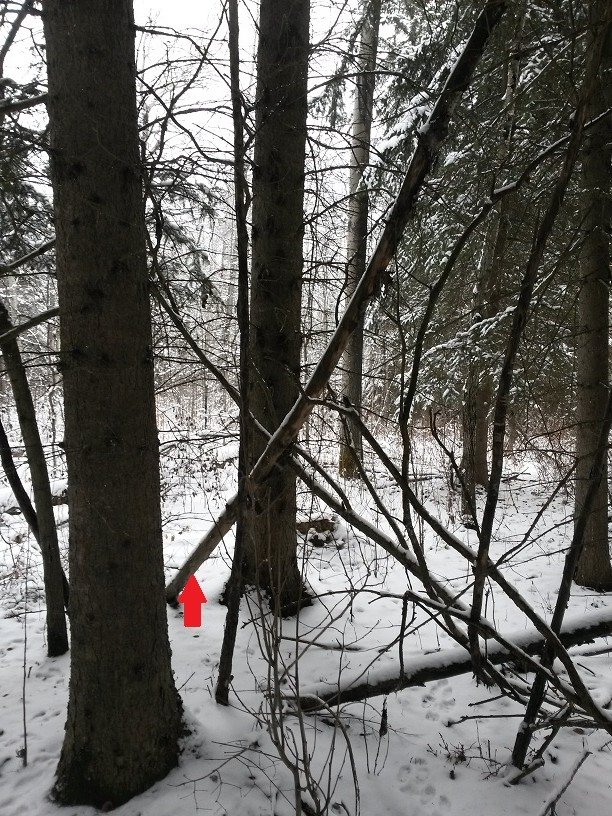
Spruce trees love to choke out other trees. As a result, we often find dead poplar and spruce trees leaning up against the larger spruce trees. Not only are these trees ready to burn, but the spruce trees help keep them dry even in the rain. The wood burns quickly and hot, but in a pinch this wood will cook a meal or heat the house for a day or two, depending on how much wood we find.
It may seem odd, but it is possible to find standing dead trees even in the middle of winter when all the trees are devoid of leaves. In the following photo, I've marked the dead tree. Can you see the difference between it and the trees that are alive beside it?
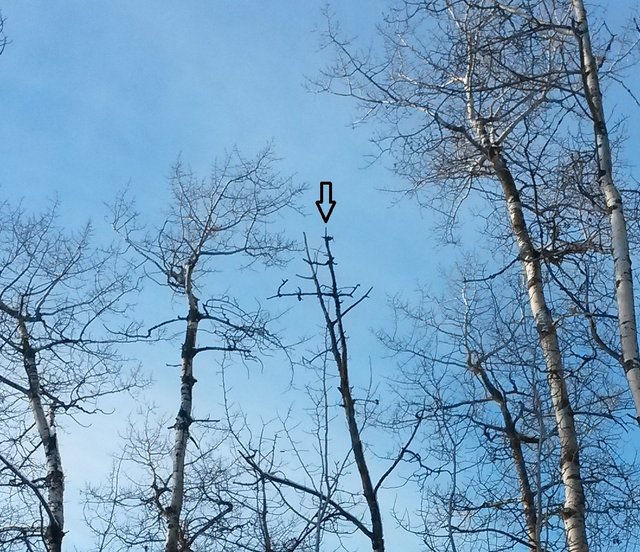
The live trees have very fine branches and buds on the twigs, read for when spring comes. But the dead trees lose all these small twigs and end up with just the thicker branches. The bark also starts to crack and fall off too. The problem with these trees is that the bottom third of the tree is often wet. However the top half is most likely dry enough to burn. If you are lucky enough to find a tree that is broken and leaning up against another tree, then it too should be dry enough to burn as well.
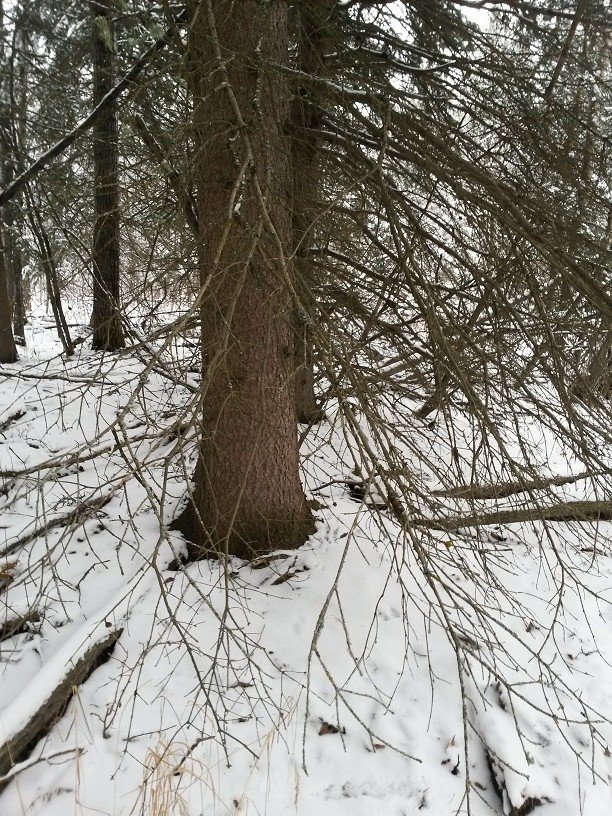
I don't normally pick the lower branches off a spruce tree to burn in our stove, but when out in the bush and needing a fire, these are perfect kindling to start a fire. They are almost always dry and some of them may even have old mans beard on them which makes them easy to start a fire. When I work in the bush, I do cut or break off these branches for safety as it is easy to poke an eye out with these. I was told by a forestry worker than when we do trim spruce trees, to make sure that we cut the branches flush with the trunk of the tree. If we leave too much sticking out, the branch will rot into the tree. But by cutting it flush, the tree will scab over the branch and seal it up.
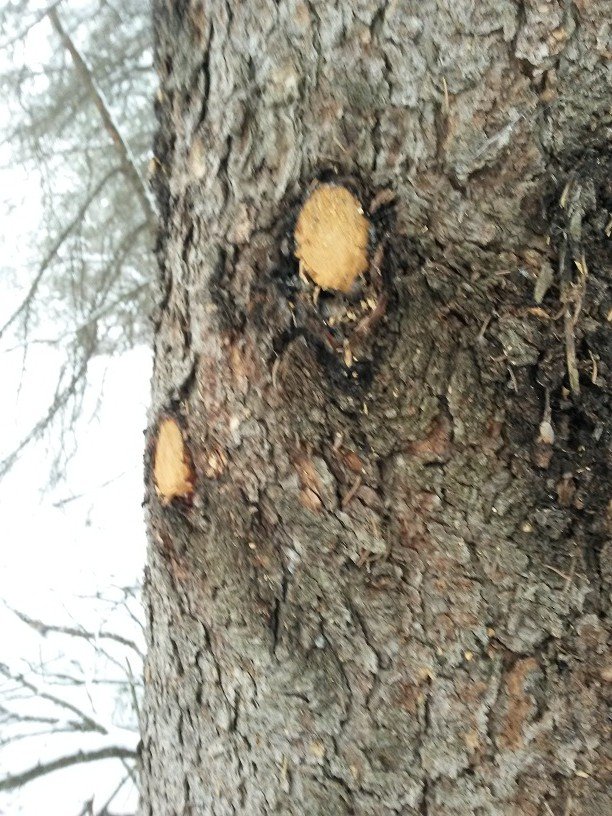
The full moon shining through the branches of the trees just as the sun starts to break up the night during an early morning walk.
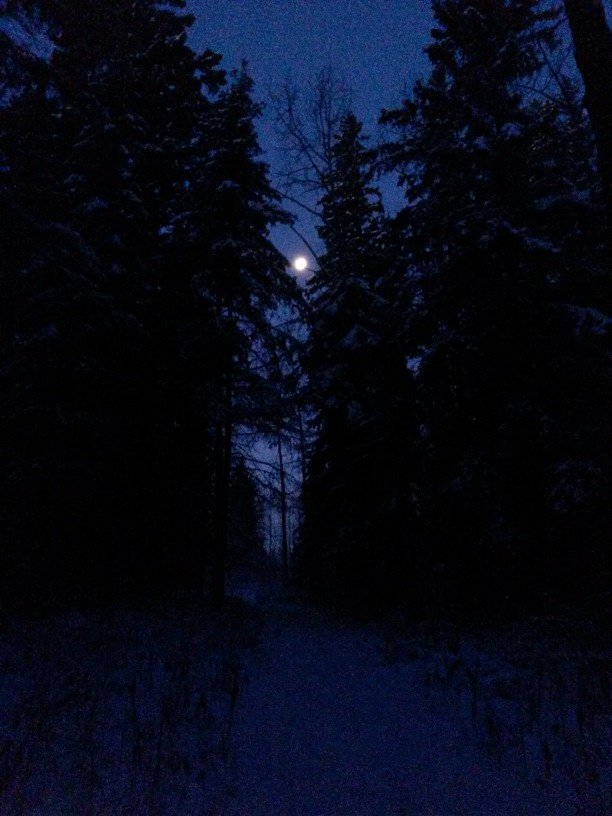
It is my experience that if the tree has been laying on the ground for more than a few months, it will start to absorb the moisture from the ground and become very wet. So I focus on finding trees that are standing dead, leaning up against other trees or the branches keep the trunk about a foot or more off the ground. Our 68 acres of northern boreal forest produces three times the wood that we use each year for fire wood. So it is not possible for us to keep up with what the forest produces. That is good news for us as it will sustain our family for ever with little risk of over consuming.
We do focus on cleaning up all the dead wood so that when a forest fire does burn through, we hope that it will be much cooler than it would be if all the dead wood was there to burn. Cooler fires means it may be easier to save our buildings in the event of a fire.
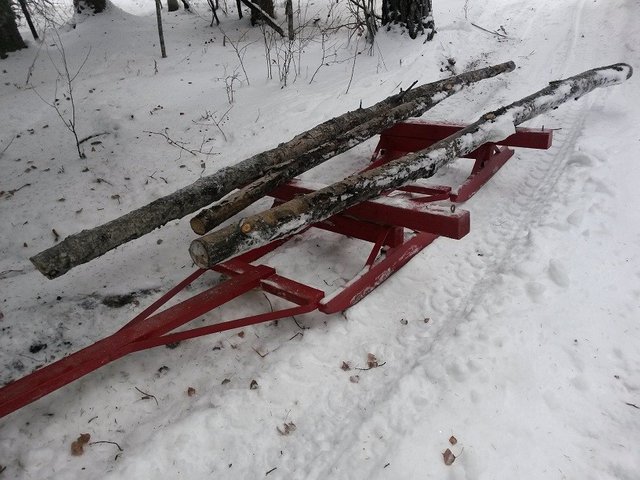
My dad made an old fashioned slay, so if the snow is not too deep, I use it to skid trees out of the bush. I pull it behind the quad and it seems to work well if I don't over load it and bog down the quad. Otherwise, we have a home made utility trailer that we pull with the quad to haul out wood. The slay works well as it runs in the track of the quad. So if we keep the trails packed down, we could use it all winter, where the trailer would get bogged down in the snow.
We only do selective harvesting of wood as we don't want to engage in any clear cutting. Our northern boreal forest that we steward has never been commercially harvested, so we have trees that are well over 100 years old. We also have a very high diversity of plant and animal life which needs to be preserved. We leave stumps that are about three feet tall so that the bugs, mushrooms, wood peckers and other critters have room to share in the prosperity. If I trim trees I pile up the branches to create habitat for mice, rabbits, grouse and other smaller animals.
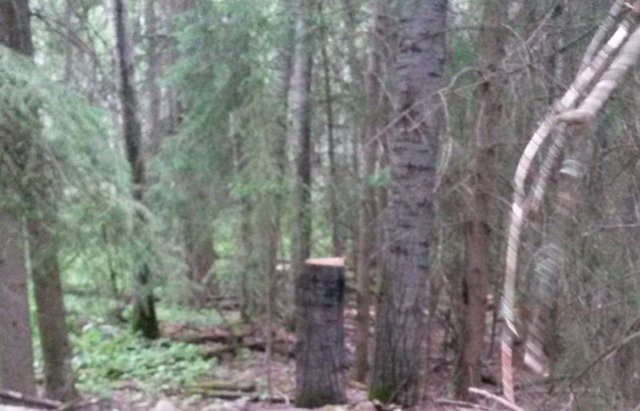
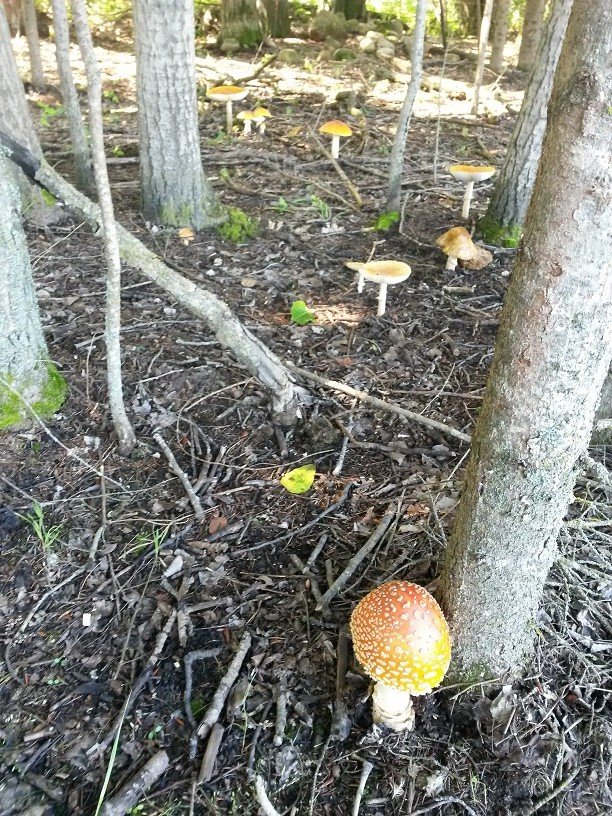
We are also the first to patrol the roads to find any fallen trees after a wind storm. It is free fire wood and it is easy to harvest too. Doing our duty to serve others at the same time! We also find lots of wind blown trees in our wood lot, so we will harvest them as well. However, during the summer we stay out of the bush as the mosquitoes are often relentless during the summer months. That limits the amount of time we can spend harvesting wood.
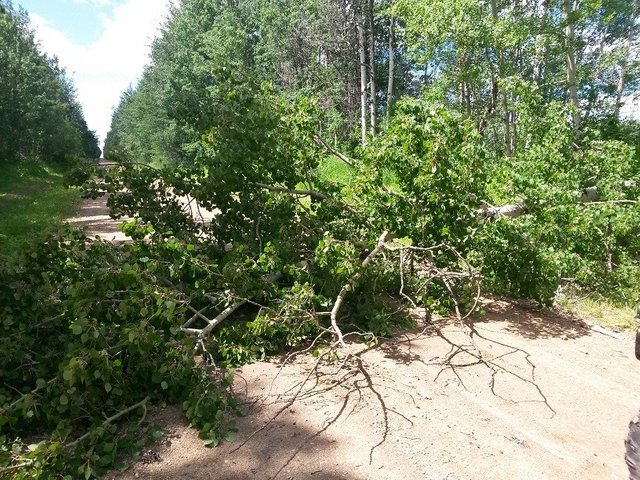
In my neck of the woods in Missouri I have a bunch of standing and very dead Osage and Locust. Those I plan on cutting down within the next month, get them chopped and stacked so that we are prepared for next winter. Plus if I cut them down it will allow for the actual native trees to grow. I would like to see more Black Walnut, Maples and even some Oaks. Tired of Osage and Locust...especially the thorns!! They go through tires and boots with ease!!
Thank you for sharing this post!
Kenny
Pfeiler Family Farm
Great tips. I found the one about spotting a standing dead tree to be the most helpful. The picture you had made it pretty easy to see the characteristics to look for.
That's a huge fly agaric in the other pic as well!
Thank you. Yes, the mushrooms did well this year. I had a few people interested in that particular variety of mushroom. lol
The thing to watch out for with identifying standing dead in the winter: Sometimes the tips die but the bottom of the tree is still alive. So it won't be dry to burn, but I cut them anyway as the tree is sick or dying.
Back when I used to cut firewood, we always looked for the dead standing maple and elm trees. Pretty much all the elm was dead, but you would have to find it. A lot of the time, there would be no bark on most of the tree. The bottom part of the tree was always wet, but we took it anyway. We just piled it separately to let it dry. I remember back in the 1980s cutting firewood in the dead of winter with the snow up past my knees. You'd cut down the tree and it would disappear in a cloud of snow. Then you have to dig it out to cut it up. I didn't mind the cold so much back then.
I would never have known that about cutting flush with the trunk. Are you using a saw when you do that?
I read an article once that said one of the reasons wildfires are worse now is exactly because people aren't harvesting dead wood anymore and it's all just sitting there as tinder. I mean, think about it - do we ever hear in the news about wildfires in parts of the world where wood heat is still common? We might hear about floods and landslides there when they clearcut and over harvest, yes, but not really fires. Humans are part of the ecosystem, whether we realize it or not, and we've totally gotten out of step with our place in it, poisoning and overharvesting in some places and neglecting our role utterly in others, not to mention "managing" other areas with piss poor logic (like, removing all predators. Wolves have a role, too). Sigh.
So right on to y'all for managing your area well.
I use a chain saw to trim the trees. As for the forest fire issue, especially with Fort McMurray last year and all the fires this year, the problem is that the government does not allow the indigenous to manage the forests any more. They used to set fires all the time to manage the forest and ensure that fires don't go out of control like they do now. The government now puts a dollar value on all that wood and does not want it to burn, but forests need to burn. Fire is an integral part of the cycles that forest need to maintain a healthy balance. Pine for example need fire to open up the pine cones so that their seeds can be freed. Putting out all the fires and not letting the forest burn is a huge problem and the indigenous have been saying this for YEARS! I agree with their assessment.
I agree, we are an integral part of the ecosystem. We are the land, just like any other animal, tree, bug or worm. It is a huge mistake to exclude us from that ecosystem. We are here to help steward the land and it is time to return to the land so that we can learn how to do it properly. Money must be removed from the decision making process, otherwise these fires will get worse, not better.
<3 Thank you for recognizing our efforts to be a good steward.
Another example of governments interfering. Will they ever learn? Probably not. Greed always raises its ugly head.